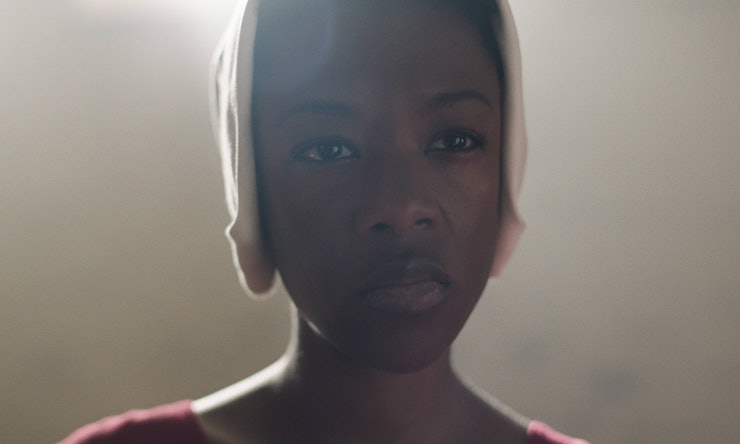Well, you may have noticed my recaps of Hulu’s The Handmaid’s Tale all but dropped off the face of the Earth towards the end of May. That’s because bed bugs are real, kids. And they will consume your life until they are gone and your friends disown you because, Mel, we are so done with hearing about your effing bedbugs.
Anywho... The Handmaid’s Tale has easily accomplished a lot in its first season. It horrified us with how uncannily topical it was, it made Hulu relevant again (or maybe for the first time ever), and it helped influence the culture of protests the country over (those images of women dressed as handmaids were haunting). To say it was an excellent show with a highly digestible and relatable social message, well-written episodes, and beautifully crafted shots throughout isn’t really doing justice, however, to what the true triumph of the show is: the art of adaptation.
Adapting any work is an incredibly polarizing experience for all involved. The very concept of taking a piece of art and rendering it into another medium is fascinating to think about. It kind of links all art forms together in a larger cosmic family, if you want to get super cheesey about it. But part of adaptation is taking the source material apart at an anatomical level: what works in another medium and what doesn't, what is the the heart and lungs of a work that we can’t do without, and what is the appendix and optional extra kidney that’s taking up space? It can sometimes be a game of whisper-down-the-lane where the end result doesn’t exactly match up with where the original started. And, unfortunately, the artists involved with that process and the fans don’t often agree.
Where The Handmaid’s Tale succeeds is in avoiding that technical breakdown of plot points and character beats in favor of extracting the soul and purpose of its source piece. Bruce Miller noted that a lot of the writing of the series took place during the presidential debates in the 2016 election, fueling a lot of the language, rhetoric, and spine of scenes where Offred and other women are subjected to the harsh world of life as walking uteruses in Gilead. But what the show really does is expand its feminist reach into other realms of the world and story that weren’t touched up in the original novel.
We get to see Offred when she was June. We saw life as we know it, complete with discourse on everyday battles for feminism that we face now, played out against the world as it became. The talk of scapegoating, the rounds of blaming before finally they decided to dismantle democracy all together (this sounds familiar). There were interesting parallels: the way in which the handmaids were tasked with watching each other so the women never trusted one another long enough to form an alliance (just look at the Women’s March on Washington, powerful things happen when women are allowed to support each other). Canada, as always, is the bastion of safety and social justice waiting for the American lucky enough to escape (into the Toronto neighborhood of “Little America”).

We also were treated to a cast far more diverse than the one featured in Atwood’s original novel, with actors of color in heroic roles and more queer characters than were featured in the novel. Atwood noted at an event I attended a few weeks before the show premiered that diversity was the ultimate enemy of monolithic governments. The racially diverse characters in the show are those making a stand against the oppressive system.
Further, the show takes the story out of Offred’s head and adds consequences to it. The novel is, as the title suggests, Offred’s tale: her stream of consciousness, her narration of her day-to-day life with distant memories of a time before. The show makes the point that everyone is suffering and everyone is to blame. This is something Offred notes but is, for the most part, trapped inside her own solitude (which us, of course, another victimization of the system attempting to keep women apart). The show handed its audience the intricacies of both large scale government moral bankruptcy and daily microaggressions and prejudices we might face from partners, friends, and the barista down the street.
While some purists may feel a derivative work can never live up to the shadow of the original, this is one adaptation that strove not outdo its source material, but do it justice. The original novel was written in the world of the 1980s and all that entailed for the future of America (and here we are, kids). The greatest thing this show could do to honor the book and the forward thinking, speculative works of Margaret Atwood is to take into account the world around us and where we are headed if we don’t do something. If we don’t, as Offred notes, wake up.
Season two of The Handmaid’s Tale is headed to Hulu in 2018.





0 comments:
Post a Comment